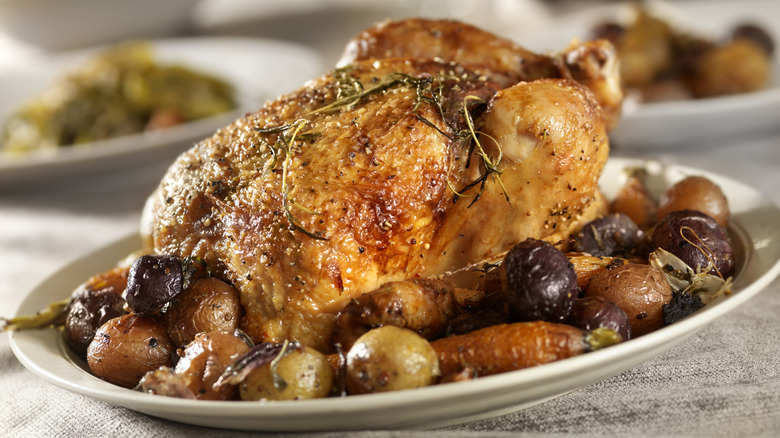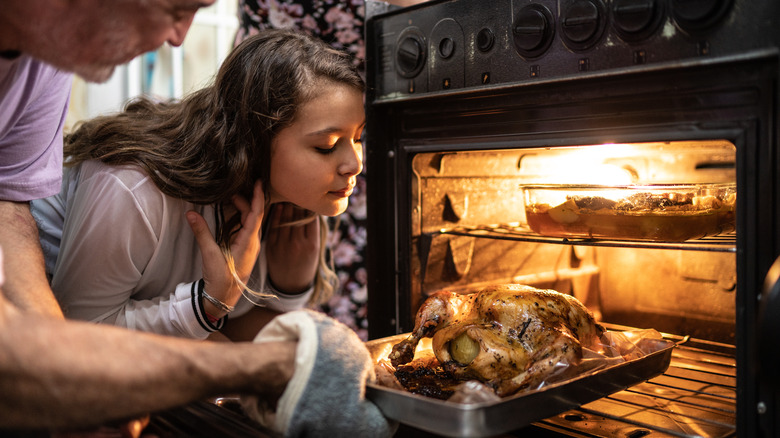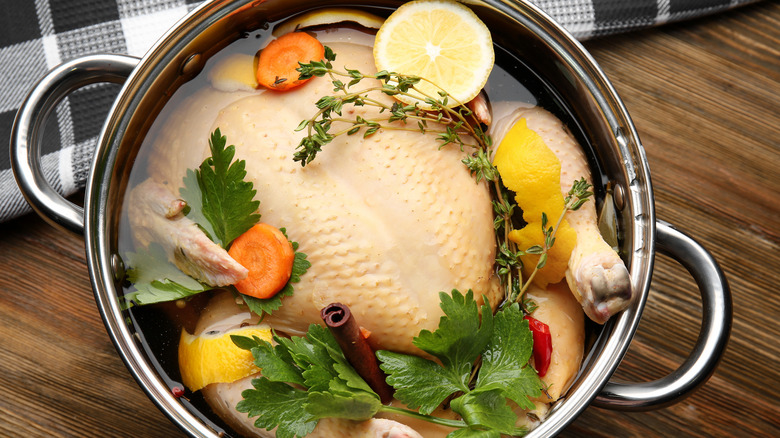Is Basting Your Chicken Worth The Extra Effort?
Basting is a culinary practice steeped in tradition, with many chefs and home cooks swearing by its ability to keep poultry moist and flavorful during roasting. The principle behind basting is that by regularly coating the chicken with its own juices or a marinade, the meat will retain moisture and the skin will achieve a desirable golden-brown color. But is basting really a thing you need to do when cooking a whole chicken? Is the end result really worth the extra effort?
Basting theoretically helps keep the meat juicy by coating it with liquid, which can add flavor and aid in browning the skin. The key word here, however, is "theoretically." In practice, the continual opening of the oven to baste can do more harm than good, as it leads to temperature fluctuations that can actually dry out the meat. Moreover, since chicken skin is largely impermeable, the liquid doesn't truly penetrate the flesh. The promise of extra juiciness is, thus, largely a kitchen myth. Instead, the basting liquid mostly flavors the skin and evaporates quickly due to the high heat, potentially leading to a more burnished exterior. Whether that exterior warrants the effort of basting is a matter of personal preference. For some, the potential for a golden, flavorful skin is enough reason to baste. Others might find the marginal difference in taste doesn't justify the constant oven-tending.
Basting can sometimes lead to a dryer bird
Every time the oven door swings open for basting, the oven loses heat, and the cooking process is momentarily stalled. This can result in uneven cooking and extend the overall time your chicken needs to roast, leading to dryness in the bird's leaner parts. In contrast, leaving the chicken undisturbed allows for even and consistent cooking.
But let's not discount the aesthetic and emotional components of basting. There's a certain allure to the process — the ritualistic spooning of juices, the sizzling sound as liquid hits the pan, and the aromatic steam that fills the kitchen. These sensory experiences can enhance the enjoyment of cooking, even if the practical benefits are minimal. For the visually-driven cook, basting can also contribute to a more appetizing final presentation, as it can help achieve that coveted, glossy finish on the skin that we often see in cookbooks and magazines.
Basting requires a certain finesse
For those who swear by basting, perfecting the technique is essential. Though basting is usually done with the chicken's own juices, if the basting liquid contains too much water, the technique can actually backfire and end up yielding the universally loathed flabby exterior. It's a delicate art — opt for a liquid rich in fat like clarified butter or ghee to foster that irresistible, crispy skin. Fats conduct heat more effectively, which aids in achieving a beautiful bronze color. Additionally, to make sure you don't lose too much oven heat, make sure to be quick and sparing; using a baster can help minimize the time the oven door remains open.
If it's a juicy bird you're after, brining stands as an effective alternative to basting, offering a more reliable means for the infusion of moisture and flavor. Brining works wonders for moisture retention, allowing meat fibers to absorb liquid through osmosis. It not only keeps the chicken moist during cooking but also seasons it throughout, as brines contain a lot of salt. Surprisingly, one of the best liquids for brining chicken is pickle juice — it offers a great mix of salt and acidity to enhance your chicken's flavor.


